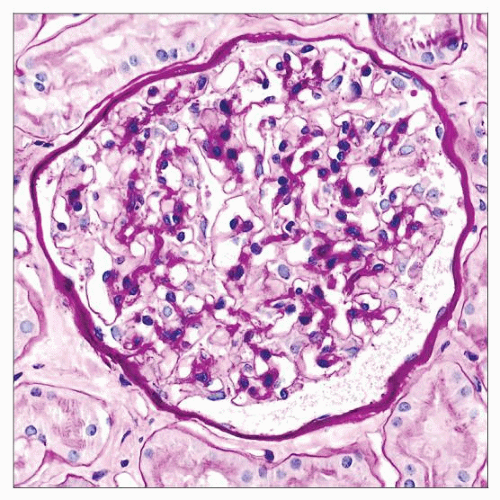Thin Basement Membrane Disease
Helen Liapis, MD
Joseph Gaut, MD, PhD
Key Facts
Clinical Issues
Presents with persistent microscopic hematuria
Autosomal dominant inheritance
1-5% of population
Microscopic Pathology
Minimal changes
Ancillary Tests
Immunofluorescence
Preserved α3, α4, and α5 (IV) collagen
Normal expression does not definitively exclude AS
Electron microscopy
Uniform GBM thinning (< 200 nm)
Genetic testing
Mutations in COL4A3 or COL4A4 genes
Top Differential Diagnoses
Alport syndrome
IgA nephropathy
 This PAS stained slide from a woman with thin basement membrane disease (TBMD) shows a normal glomerulus, typical of TBMD by light microscopy. The GBM averaged 230 nm by electron microscopy. |
TERMINOLOGY
Abbreviations
Thin basement membrane disease (TBMD)
Synonyms
Benign familial hematuria (BFH)
Definitions
Autosomal dominant disorder presenting with asymptomatic microscopic hematuria characterized by diffuse GBM thinning
ETIOLOGY/PATHOGENESIS
Genetics
Autosomal dominant in majority of BFH
Rare mutations in collagen α3 and α4 (IV)
40% of patients with GBM thinning have mutations in COL4A3 or COL4A4 genes
Encode α3 and α4 chains of type IV collagen, respectively
Heterozygotes, typically women
Autosomal recessive Alport syndrome (ARAS)
Stay updated, free articles. Join our Telegram channel

Full access? Get Clinical Tree



